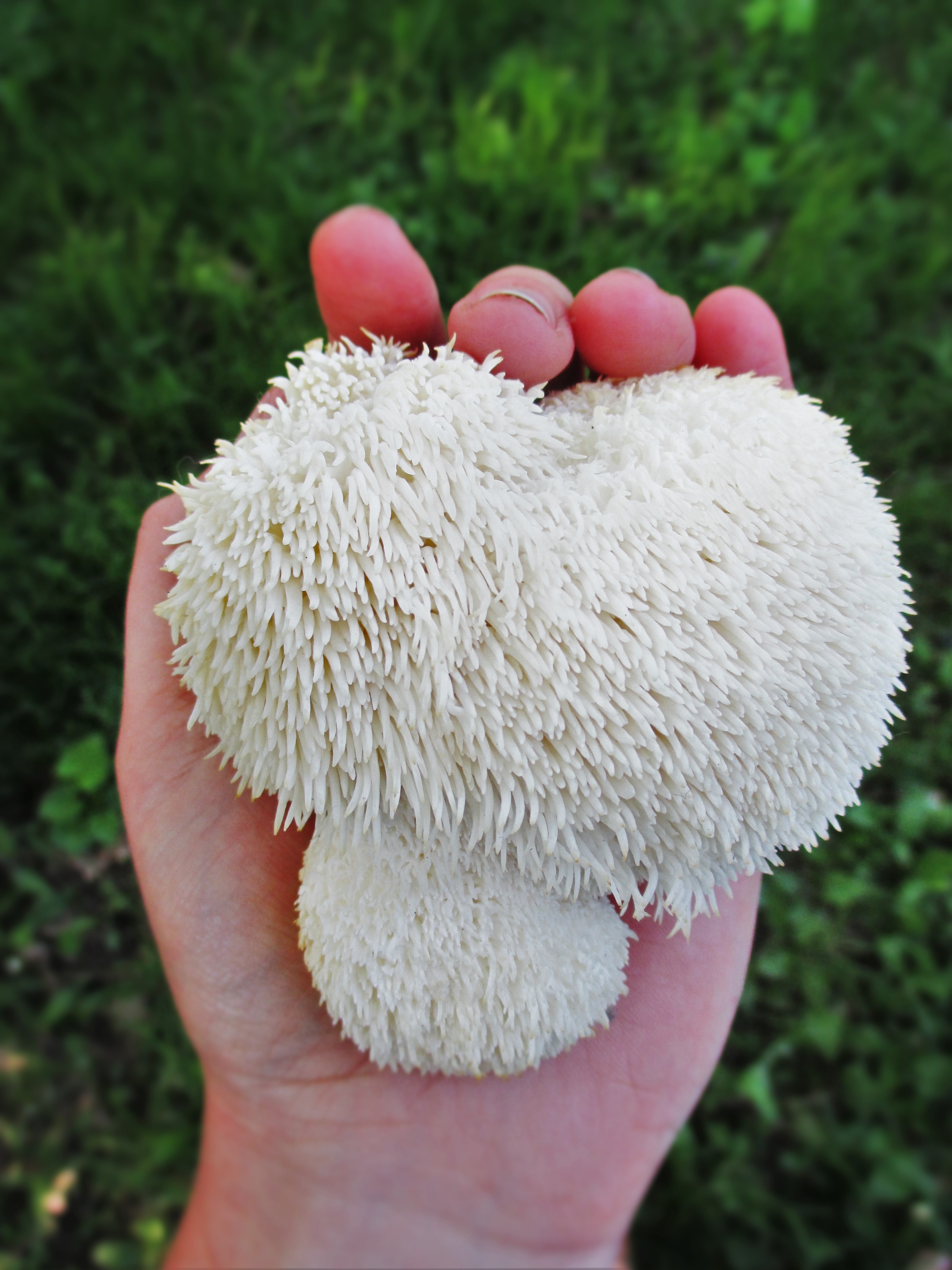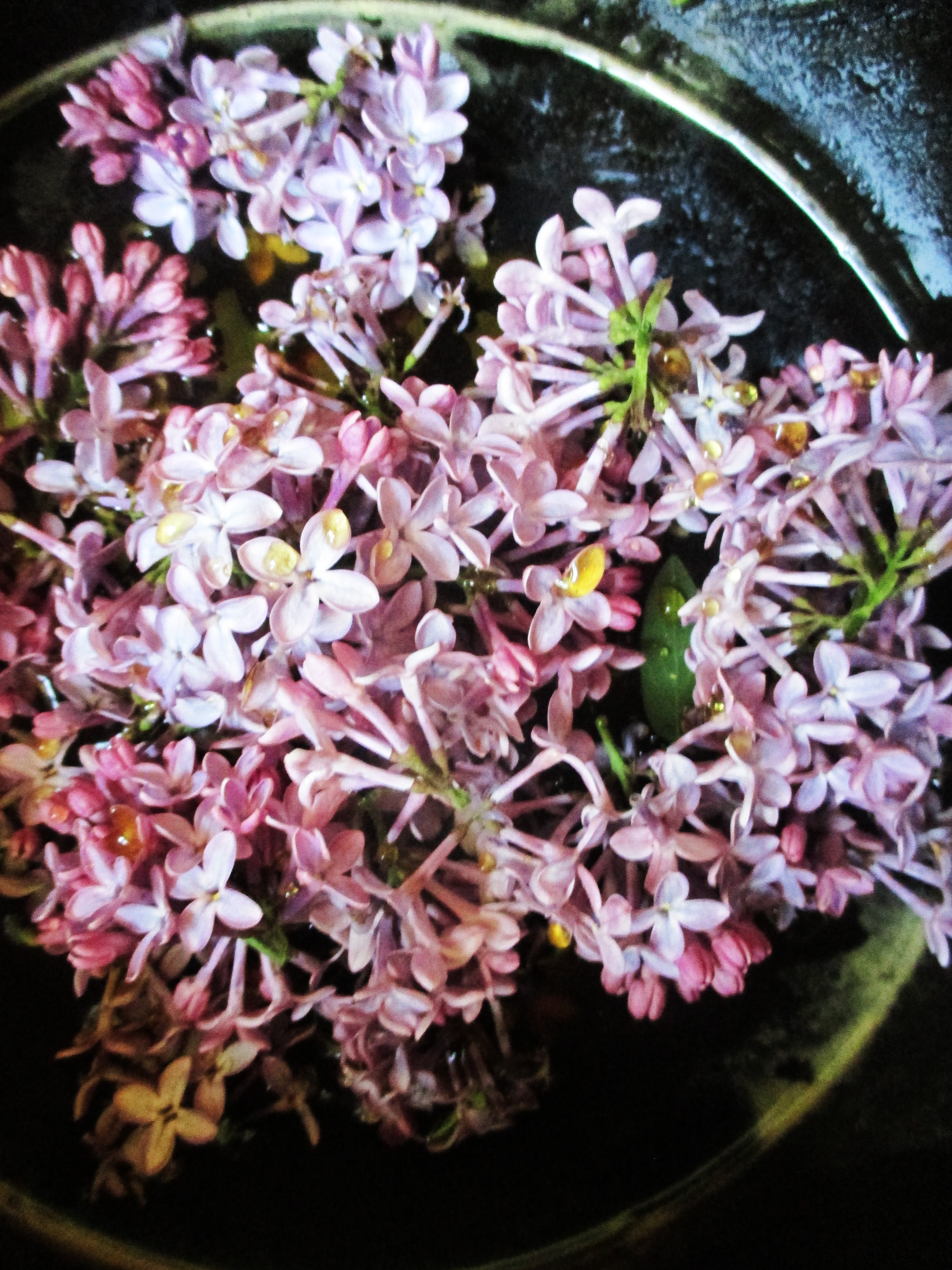This article is a version of a more expanded, in-depth article on medicinal mushrooms and lion’s mane double extract altogether which I contributed to Essential Herbal Magazine; published for the issue that came out for April 2014!

It has been my pleasure to purchase this locally-grown batch of Lion’s Mane mushrooms from friendly farmer Todd Mills down at Mushroom Mills, located near Oxford Junction, Iowa!
During the summer, you can find these gourmet delights and others at the Iowa City Downtown Farmers Market. Mushroom Mills sells a variety of other mushrooms, most notably several beautiful strains of oyster mushrooms. I have been busy dehydrating them in preparation of making a Lion’s Mane double extract. Thank you, Todd!

So here’s a little interval of time where I focus on medicinal fungi. While most probably wouldn’t consider them “medicinal herbs” – I do.
What more, they blow most herbs out of the water with how potent they are. Lion’s Mane is no exception: studies these days are going crazy about medicinal mushrooms, with Lion’s Mane appearing in that spotlight frequently.
Lion’s Mane is also known by different names, such as Monkey Head, Satyr’s Beard, and Deer Tail to name a few.
Healing, Nutrition, and Phytonutrients of Lion’s Mane
So what’s the scoop on this leonine mushroom? Here’s what studies and research have unveiled so far.
- Studies have shown that daily (or frequent) consumption of Lion’s Mane improves general stress, anxiety, and depression, while touting “neuroregenerative” effects. That is, eating the mushroom over time strengthens, tonifies, repairs, and improves function of the nerves in your body. In general, Lion’s Mane has notably and unmistakably improved cognitive capacity and memory in humans and animals.
- On a more exciting level, Lion’s Mane is looking very promising for the treatment and prevention of Alzheimer’s disease, Parkinson’s, old age onset dementia, and senility. It has also been noticeably beneficial to nerve damage as the result of physical trauma or injury.
The Herbalist’s Approach
Herbalists using mushrooms in their practice? Best get use to it!
Many traditional and clinical herbalists both already use reishi. But the more we learn about mushrooms, the more we’re going to see them used therapeutically and nutritionally, that much is certain. Lion’s Mane is likely to be one of the first among those ranks.
- Very fittingly for its name, Lion’s Mane is a nerve tonic to the highest degree – you could call it a “Nerve Adaptogen.” As a signature, Lion’s Mane and its effects are all about “getting your courage back.” Good mnemonic device, right?
- This bizarre-looking, lionized mushroom is perfect for those dry, brittle, spread-thin and nervous “Vata” people who can’t afford to lose a drop of nutrition, especially when most herbal nervines (passionflower, kava kava, motherwort, valerian etc.) tend towards drying, diuretic, depleting action. These favorites do tend to soothe it’s true, but also increase output of nutrients in your urine. Lion’s Mane is high in protein (about 20%) and is not diuretic, so this does not pose a problem.
- Its effects are not immediate, and it is not an instant nervine like Motherwort or Lemon Balm. Since it is a tonic, it is to be taken daily or on a regular basis, improving overall function over time while not compromising nutrients at all. In fact, this mushroom is a nutritious food, even for those who aren’t concerned about health.
So it is a bit like getting some “lion’s courage.” It steadies and improves the nerves over time, dispelling anxiety and stress.
Studies have also shown that it even increases “bravery” in some test subjects – stressed mice who were fed Lion’s Mane as part of their diet were more likely to recover, and then explore and investigate unknown or new territory of their environments. Talk about losing your nerve, and then getting it back!
You can eat and prepare Lion’s Mane like any other mushroom, but if you want to focus on its medicinal effects it may be a better idea (and save you money) to make a double extract.
This is the general approach to crafting a tincture out of most medicinal mushrooms like Reishis and Shiitakes, as only some of the important constituents are alcohol-soluble– while others are hot-water soluble and sensitive to alcohol. So here I’ve provided this excellent medicinal mushroom extraction method from Guido Mase’s book The Wild Medicine Solution, and rhapsodized it as it applies to Lion’s Mane. (I would also recommend you buy the book; it is a treasure trove of information!)
Two-Phase Extract
- Dried Lion’s Mane
- High Proof Alcohol (I use 151 Everclear)
- Glycerin (though I consider this optional)
- Water
-Take your dried mushrooms, divide the into two equal parts and chop them well. Using the first part, prepare a tincture by covering the mushrooms with a solvent of 75 percent alcohol, 15 glycerin, and 10 percent water (if opting out on glycerin: 90 percent alcohol, 10 percent water. Glycerin is meant to help with the emulsion). Set tincture aside, and let it steep for four weeks, shaking it occasionally. Then strain it and measure its volume.
-After you’ve strained the tincture, take the second part of the dried mushrooms and simmer them for at least one hour, preferably two or more, in twice as much water as you used for the total solvent volume. Keep adding water, if necessary.
-At the end of the simmering, strain the mushrooms out and reduce the volume of fluid you have left by boiling it down so that it equals the volume of strained tincture. Take this off the heat and allow it to cool completely.
-Combine the simmered broth and strained tincture, mixing well with a whisk. Make sure you are adding the tincture to the broth and not vice versa to reduce the amount of concentrated alcohol the constituents in the broth have to endure.
-Bottle and store, preferably in a dark-tinted glass bottle or container.

References: Paul Stamets/Huffington Post. Wild Medicine Solution by Guido Mase. PubMed.gov. Personal Experience.










